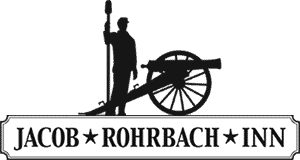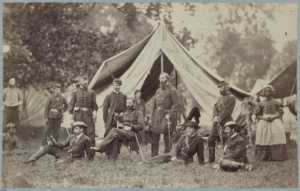For decades, news accounts published days after Antietam undergirded biting criticism of George B. McClellan by his contemporaries, eminent historians and popular authors. Over the past 25 years or so, fortunately, Joseph L. Harsh and other Maryland Campaign students have produced far more even-handed assessments. Dan Vermilya’s archival research into the Army of the Potomac’s troop strength, fitness and prior combat experience and Steve Stotelmyer’s judicious reconsideration of McClellan’s decisions on America’s bloodiest day are two fine examples.† Given the broad scope of their works, they chronicled the fluctuating troop totals at high levels: army, corps and/or division.
The scope of this lecture will be narrower and deeper, by design: it focuses mainly on Fitz John Porter’s 5th Corps and details troop figures at battalion and regimental levels, taking advantage of data recently added to Antietam National Battlefield’s unit files. This bottoms-up approach makes it easier to assess troop strength claims, whether made in the 1800’s or modern times, and to tie the individual units’ strengths directly to their respective dispositions and movements on the 17th, based on the ORs and Carman-Cope maps. The result, as the lecture will illustrate, is a clear picture of the infantry resources available when McClellan and Porter faced fateful late-afternoon choices. In light of this picture – rounded out by a recap of the day’s events and several other factors typically neglected – the lecture will argue in conclusion that the decisions those generals made were eminently reasonable. Join us on July 20 to hear Frank E. Bell summer program – “Unused Reserves? McClellan’s Failure “To Destroy The Rebel Army”.
While still in his teens, Frank was introduced to the Civil War through Bruce Catton’s Centennial Trilogy and a family move from Connecticut to Pennsylvania. Decades later, his interest was rekindled when a job transfer brought him and his wife Mary from California to Maryland. The intervening years saw him complete his formal education, serve in the Air Force and then undertake a fascinating career in the aerospace and defense industry. In 2008, as retirement approached, he became a National Park Service volunteer at Antietam.
Today, Frank enjoys interacting with Antietam visitors when they arrive and as they tour the field. Hours spent as an ambassador overlooking Bloody Lane have gained him the moniker ‘Warden of the Observation Tower.’ In addition, he has updated, expanded and clarified hundreds of pages of Antietam-related resource education materials – among them the War Department Tablet Binder, Union and Confederate Tables of Organization and Blue & Red Unit Field Listings – and created single-topic “quick reference summaries” of the latter listings for use by rangers, guides and ambassadors alike.
A past president of the Hagerstown Civil War Round Table, Frank currently chairs its Scholarship Committee. He has presented brief talks there and at the Boonsboro Historical Society. And, he has been awed to learn of a great-great grandfather who fought in the Eastern and Western Theaters with the 29th Pennsylvania Volunteer Infantry and of a great-grandmother who witnessed Abraham Lincoln’s funeral procession as a young girl and, eight decades later, held baby Frank in her arms not long before she passed away.
Come join leading historians and Antietam Battlefield Guides as they discuss intriguing topics of the Maryland Campaign of 1862 and the Civil War during our Civil War Summer Lecture Series.
These outdoors programs will be held at the Jacob Rohrbach Inn on Wednesday evenings at 7:00 p.m. These outdoor programs are free and open to the public. To ensure adequate seating, please bring a chair. In case of inclement weather, lectures will be held at the Sharpsburg Christ Reformed UCC Church at 117 Main Street. For updates and changes to the schedule check our Facebook page.



Leave A Comment